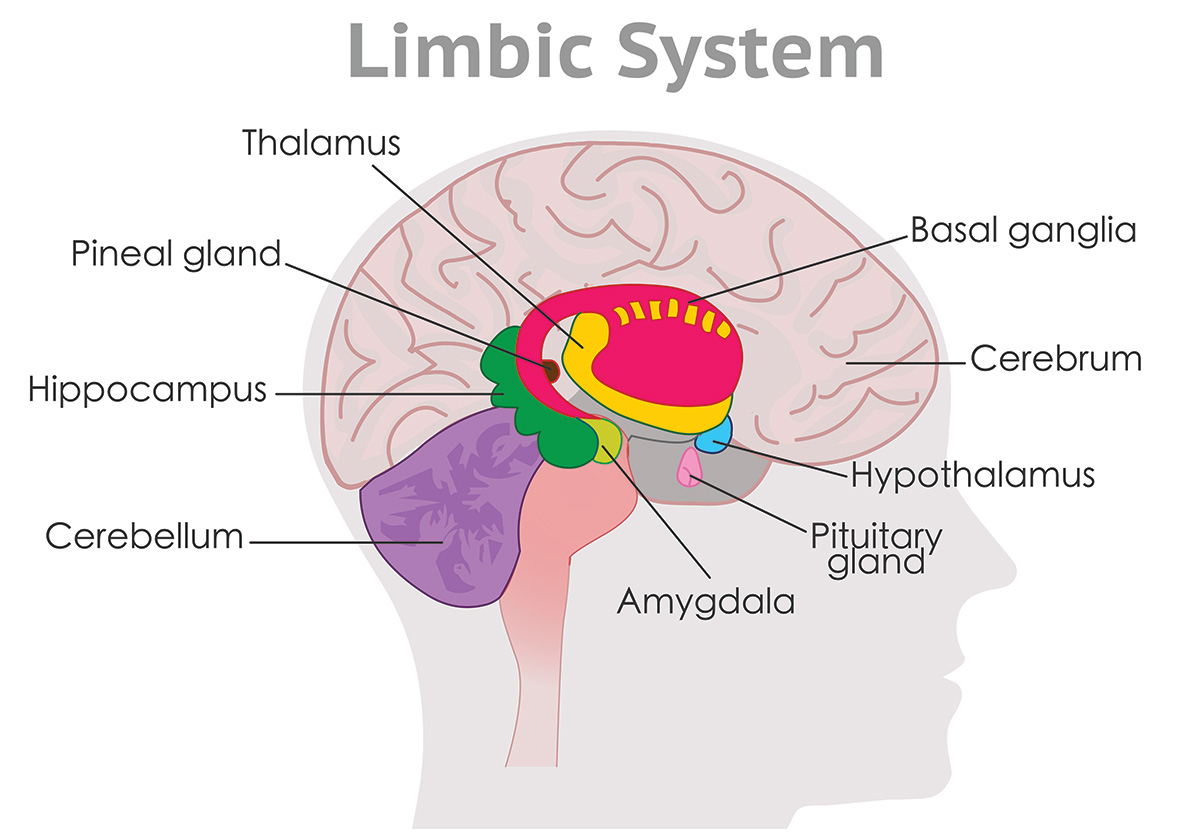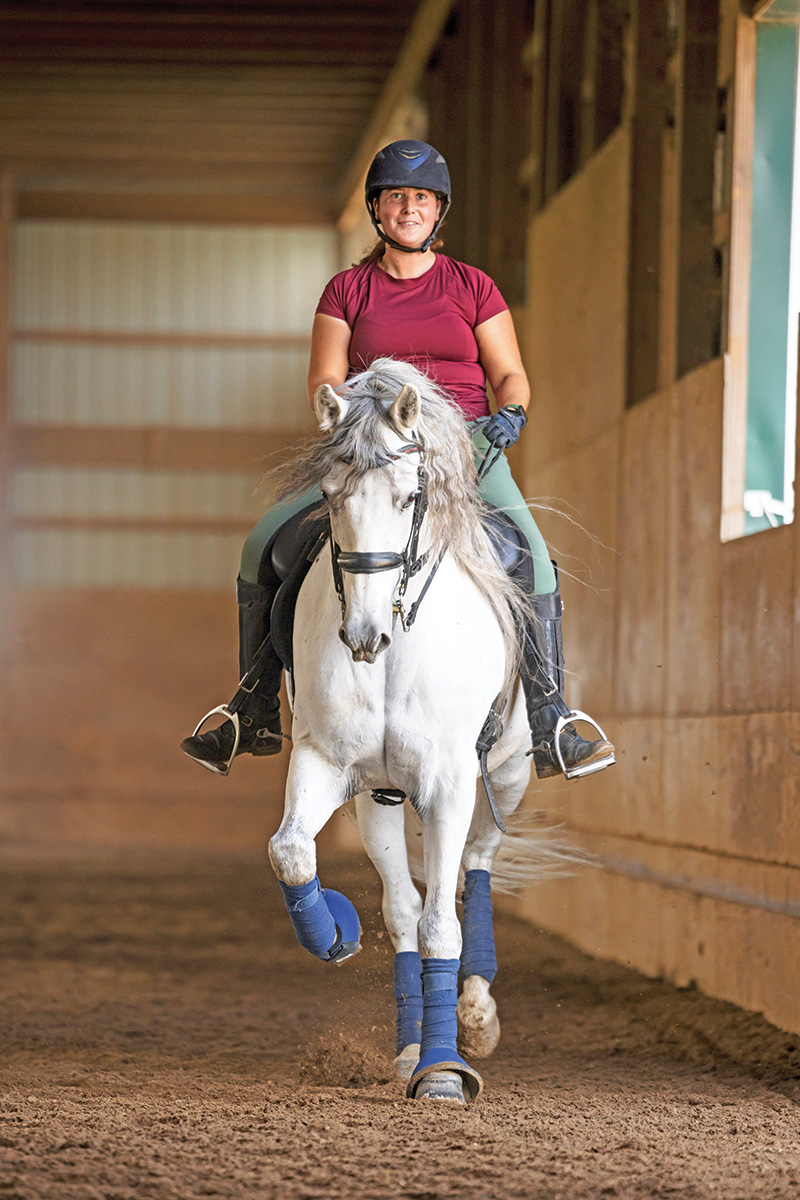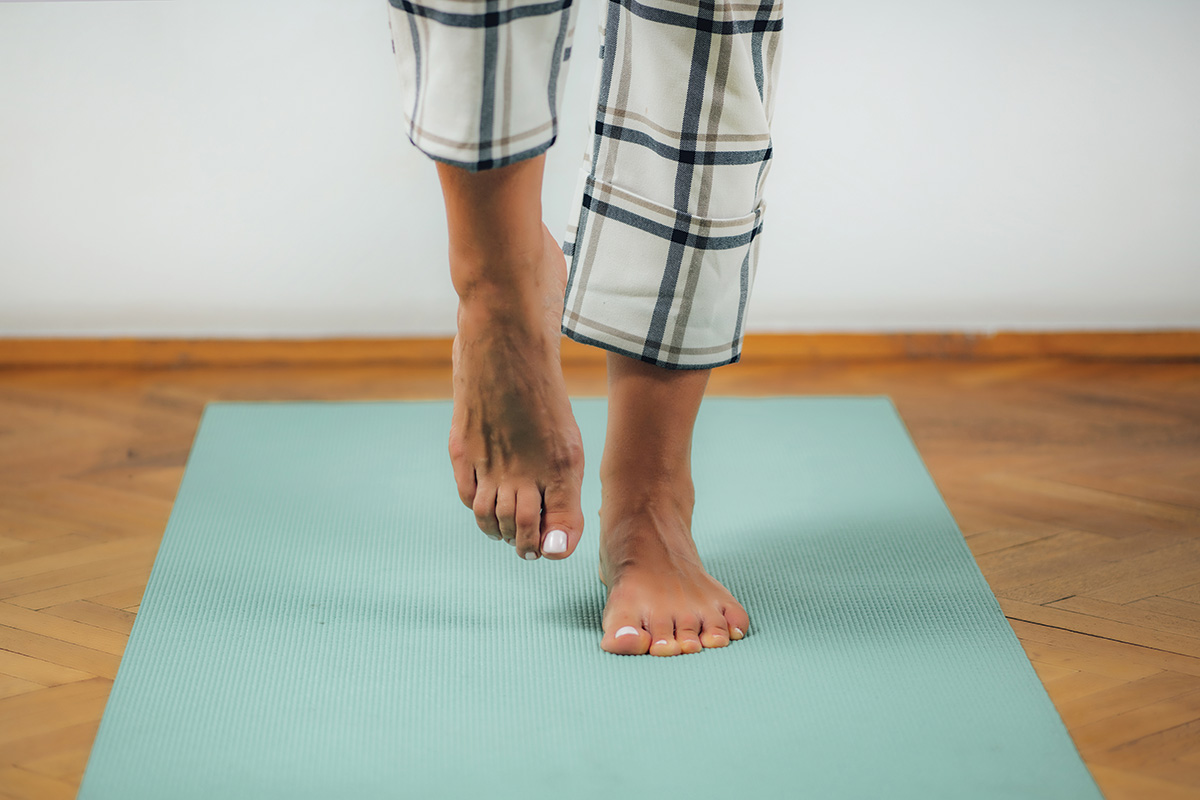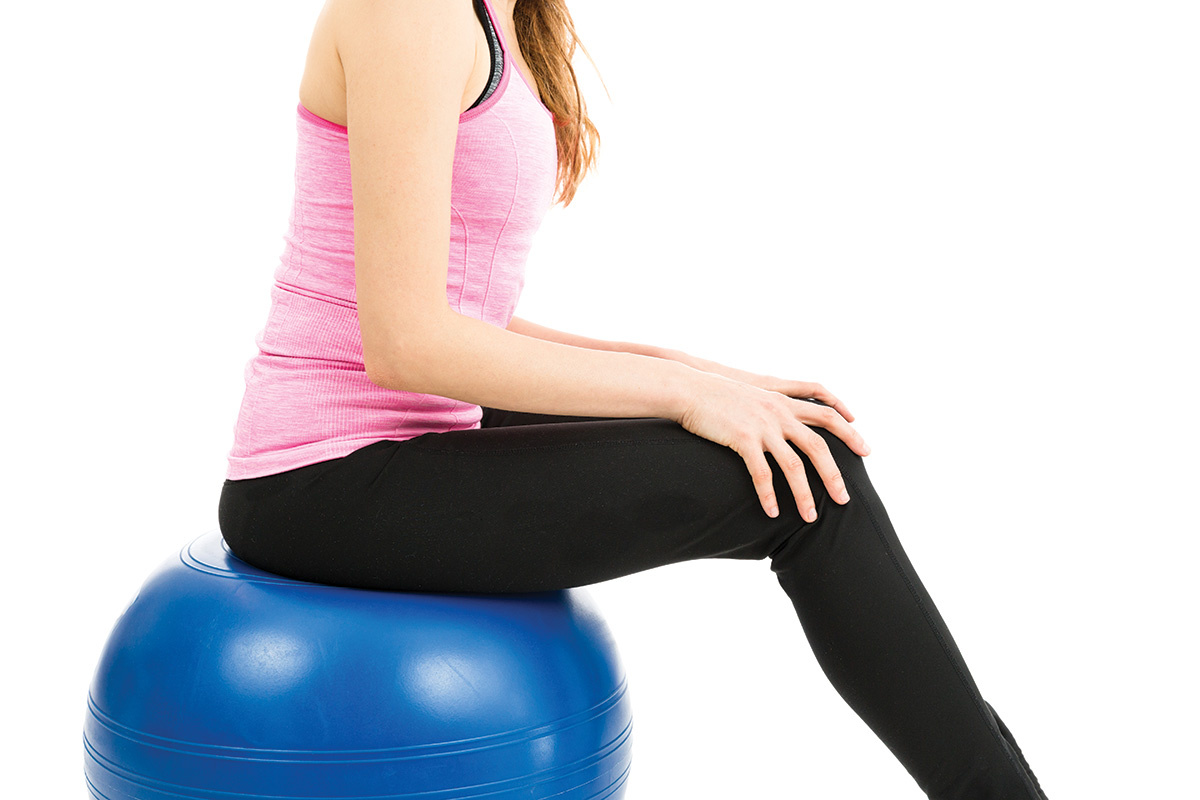By tapping the power of neuroscience and the miracle of brain plasticity, spending just a few minutes a day practicing brain-focused activities can help equestrians in many ways. Whether we want to reduce anxiety, distraction or performance jitters or improve balance, aids and connection with our horse, the following three brain games will help you breathe, balance and bounce your way to being a better rider.
Your Brain: A Quick Tour
The human brain is a complex structure that can process enormous amounts of input in a split second. One of the most vital structures is the brain stem.
Take your hand and feel from the top of your head to the base of your skull. There, where the skull joins the neck, is the brain stem. This is the never-sleeping power plant that controls all the automatic processes that keep us alive: breathing, heartbeat, blood pressure, and so on.
In addition to this autonomic system, our brain has the limbic system, which is involved in our emotional and behavioral responses. Two key components of the brain’s limbic system are the hippocampus (associated with memory) and the amygdala (associated with fear). They in turn regulate the parasympathetic (rest and digest) and sympathetic (fight or flight) nervous systems.

Why Does Neuroscience Matter for Equestrians?
As riders, we just want to ride well, maybe compete successfully, stay calm under pressure, and enjoy the journey with our horse. So why should we care about brain anatomy? The answer is simple: Because it affects everything.

“Neuroscience is at the frontier of giving us the evidence and knowledge to understand what our individual brains and bodies need to be healthy and to learn, grow, adapt and change,” says Misha Bechtolsheim, a sports performance and fitness professional based in California. With over two decades of cumulative knowledge of applied neurology, athletic conditioning, injury rehabilitation, and movement anatomy, she has had the opportunity to support a wide range of clients.
The experiences we’ve had during our lifetime shape our “output”—who we are—and how we respond to situations, stimulus and threats (real or perceived).
But equally vital is the quality of inputs to our brain.
“When we can control the quality of information we provide our brain, we help it make quick, safe, reasonable decisions and allow us to continually expand what we’re capable of,” says Bechtolsheim.
On the other hand, poor quality (or unplanned, reactionary) input can decrease confidence, slow reaction times, and lead to injuries, dementia, high blood pressure, muscle stiffness, vertigo and more.
But there’s good news.
“Our brain is highly adaptable,” says Bechtolsheim. “The importance of neuroplasticity, or brain change, can’t be overstated. It means that not only is it is possible to change dysfunctional patterns of thinking and behaving, but we can develop new mindsets, skills, abilities, and emotional patterns, no matter our age or current skills.”
Your Brain: Care & Feeding
To stay healthy and sharp, our brain needs two things: fuel and activation.
Its fuel is glucose and oxygen. In the next section, you’ll learn how breathing can significantly affect your brain and how you feel, both physically and emotionally.
Activation means “use it or lose it.”
“To grow and adapt, we need to challenge our brains enough so that it’s a bit difficult,” says Bechtolsheim. “The key is to have just enough challenge, but not so much that it triggers overwhelm and fear.”
The latter just leads to the brain going into protective mode and shutting down, much like a horse that’s been pushed too far, too fast.
In addition, your brain is constantly scanning the environment for threat and always asking the question, “Is this dangerous?”
When you can answer “no” with actions and input that instill trust and engage curiosity, then your brain can become comfortable with increasing levels of challenge over time. Before you know it, you may be able to do things you never thought possible because you allowed your brain to stay safe while it was learning it could do more.
Brain Game No. 1: Breathe
Breath work should be a point of focus for everyone, regardless of your level of performance or what activity or sport you do.
“Breathing well [brings more] oxygen to the brain, which reduces the threat that the brain might be experiencing,” says Bechtolsheim.

Because the brain is always scanning for threats, when you’re breathing better, you’re in a more relaxed state.
“[When] you’re feeling more comfortable and not stressed, your nervous system can relax and you are able to perform with greater mobility, focus and ease,” she explains.
Breath work is effective because the mixture of oxygen and carbon dioxide in our bloodstream can change our state of mind.
“Different types of stress can benefit from different ‘mixtures’ to help us feel safe and calm,” adds Bechtolsheim. “For example, prolonged exhales have been shown to induce greater levels of relaxation, improve mood, lower blood pressure, and increase activity in the vagus nerve when compared to longer inhales.”
In addition, breathing affects our physical body.
“Around your diaphragm is the rib cage, which connects to your thoracic spine,” she continues. “The thoracic spine connects to your lumbar [lower back] spine as well as to your neck and shoulders and head. Your lumbar spine also connects to your pelvis, which sits on the saddle.”
Because everything is connected, tightness in your breath can constrict your shoulders, tighten your fingers on the reins, pull your pelvis out of alignment or affect your balance.
“Riding is such a nuanced skill that any small shift or place of tension could mean you’re having one conversation in your head, but your body is telling your horse something completely different,” says Bechtolsheim.
During the day, begin to practice bringing your awareness back to your breath frequently. Is it high and shallow? Deep and low?
To bring your nervous system into a calmer, more regulated state, try the breathing exercises that fit the situation you’re in or the way you’re feeling. If you know certain activities trigger anxiety, breathe consciously before you begin and continue with the breathwork (see below).
Breathwork Exercises
During the day, begin to practice bringing awareness to your breath and increase the quality of your breathing with one of these exercises. For each, repeat the cycle four or five times or for a total of five minutes at a time.
Situation: Anxiety and Nerves
- Inhale: 2 counts
- Hold: 2 counts
- Exhale: 6 counts
Situation: Performance Anxiety
- Inhale: 4 counts
- Hold: 4 counts
- Exhale: 4 counts
- Hold: 4 counts
This is known as box breathing.
Situation: Mind Racing; Getting Ready to Sleep
- Inhale: 4 counts
- Hold: 7 counts
- Exhale: 8 counts
Situation: Confrontation; Being Upset After an Argument
- Inhale deeply
- Exhale deeply with open mouth
Brain Game No. 2: Balance
“Balance is an integral part of fitness and wellness at any age, with any movement, for any sport,” says Bechtolsheim.
It’s no surprise that good balance increases your brain’s feeling of safety and expands your range of abilities into your capable zone (see “Comfort vs. Capable Zones,” pg. 49).
Poor balance, on the other hand, can lead to increased risk of falling, moving without confidence, feeling stiff or getting dizzy. All of these are compounded with riding because the added height when we’re in the saddle increases your brain’s sense of danger because it wants to protect you from falling and injury.
If you want to improve your balance, you have to challenge it—but not provide so much challenge that you can’t succeed, according to Bechtolsheim.
“For this reason, doing balance drills that are too hard and that you can’t do successfully causes stress in the brain and decreases trust in movement.”

As you explore these balance exercises, remember that brain plasticity is driven by novelty and intensity (among other things), so make sure you’re incorporating both.
Balance Exercises
To challenge your balance, stand up and start to explore different positions for your feet, head and eyes, then play with adding speed to these position changes.
Foot Position (from least to most challenging):
- Straight ahead, hip distance apart
- Spread stance, one foot in front of the other. The closer together they are, and the more in-line (like standing on a tightrope), the bigger the challenge.
- Standing on one foot
Head Movement
- Up and down
- Side to side
- Diagonal
Eyes
- Both open
- Both closed
- One eye open
Movement Speed
- Slow
- Medium
- Fast
Layering Challenge
- Put together several aspects at the same time.
- For example, stand with spread stance, close one eye, and move your head.
Remember to have fun with these exercises. Don’t judge yourself or feel that you should somehow be doing better. Just take it slow, breathe, and keep progressing.
Brain Game No. 3: Bounce
If you have a stability ball, you know it’s great for core work and maintaining the good posture you want when you ride. But did you know that bouncing on the ball is an amazing tool for your brain?
“Sitting on the ball and bouncing is great for the lymphatic system, hydrating and stimulating the fascia and providing a low-impact quad workout,” says Bechtolsheim. “It also challenges your visual system and activates your vestibular balance system.”

Start with bouncing and then add auditory and rhythmic training. The combination increases neuroplasticity exponentially.
Here are a few ideas to play with.
- First, sit on the ball and bounce up and down to establish a rhythm.
- Use your hands to tap the side of the ball, then clap them together.
- Vary the rhythm.
- Try alternating sides.
- Do a double clap.
- Time the rhythm both with and against the bounce.
- Create different rhythms and tones.
Remember, the health and brain benefits come from the act of doing the activity, not in the perfection of it.
“Let yourself make ‘mistakes,’ learn from them, grow from them, and just have fun,” says Bechtolsheim.
Not only will you get an awesome quad and cardio workout, but you’ll be creating a lot of plastic change in your brain.
Comfort vs. Capable Zone
You’ve heard of your comfort zone, bud did you know there’s also a “capable zone” and a “threatening zone”?
If you go into the threatening zone, you’re more likely to get injured and be outside your ability level. In comparison, your comfort zone is just that—comfortable.
The problem is that if you stay comfortable, you can’t change, improve or grow. Ironically, the more you stay in your comfort zone, the more threatening and unpredictable everything becomes because you’re not used to anything else.
The key to growing safely and learning is to expand into your capable zone. Here, you can challenge yourself and expand your skill set, tools and experiences. All this makes your brain feel more and more comfortable with trying new things and shifting into problem-solving mode.
Meet the Expert |
Key Takeaway: Brain Power For Life
As you’ve discovered, breathing consciously, improving balance and exploring rhythm through play helps your brain learn, grow and trust in your expanding abilities.
Just a few minutes of brain games a day can help you let go of past limitations and reach higher levels in your riding—and possibly improve other areas of your life as well!
This article about equestrian brain games and neuroscience appeared in the March 2024 issue of Horse Illustrated magazine. Click here to subscribe!







